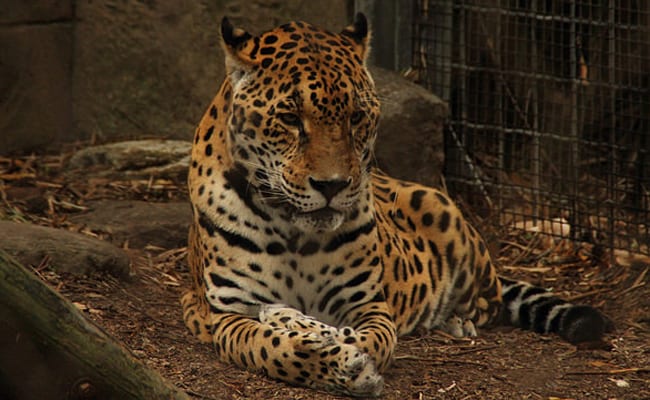July 29, 2018
Just a few hours before the Audubon Zoo in New Orleans, Louisiana, opened its doors to the public on July 14, a three-year-old jaguar named Valerio — who had been described by the staff as a “big, lovable goofball” — managed to bite through the steel cables on the roof of the “Jaguar Jungle” exhibit. He then slipped out through a narrow hole.
The jaguar proceeded to go on a killing spree. Terrified alpacas, emus and foxes with no means of escape were attacked in their enclosures. Six of these animals died instantly, while three others died later from their injuries.
At about 8:15 a.m. — nearly an hour after an employee heard the sound of animals in distress and found Valerio in the fox exhibit — a veterinary team was able to sedate the jaguar with a tranquilizer dart and examine him for any injuries. The good news from this terrible incident is that Valerio will not be euthanized for doing what he’d do naturally in the wild.

Valerio is being kept in a secure night house behind the scenes while the zoo repairs his enclosure and tries to make it escape-proof –even though the existing interlocking steel cables already meet Association of Zoos and Aquariums guidelines. The USDA inspected the exhibit after the breach and concluded that the enclosure was compliant to regulations.

What if the breach had happened when the zoo was filled with visitors? And what if the jaguar had been able to chew through the zoo’s outer perimeter fence? Spokesman Kyle Burks described the latter scenario as”conceivable”at a news conference.
In a news release, the Audubon Zoo said that it performs drills each year and maintains protocols for animal escapes “to ensure that emergencies of this kind are resolved as safely and quickly as possible.”
If Valerio had escaped during zoo hours, Burks said visitors would have been ushered into secure buildings. “Any time any of our dangerous animals are outside of their exhibit, we’re going to take action,” he told reporters. “It doesn’t matter where they are.”
Why Did Valerio Escape and Kill Animals?
Valerio was born in captivity at the San Diego Zoo in 2015, and he was moved to the Audubon Zoo last October.The jaguar may be a “lovable goofball,” but he obviously wanted to escape from his enclosure. Why?
Dr. Aletris Neils, executive director of the non profit Conservation CATalyst, has studied jaguars in the wild for 15 years. She told the Times-Picayune that Valerio has reached the age when jaguars naturally become more curious about their surroundings.
Valerio’s attacks are an example of “surplus killing,” Neils explained. This happens when cats’ hunting instincts kick in within an environment that’s been altered by humans. When cats enter hunting mode, movement determines how much they will kill — not how hungry or territorial they happen to be feeling.
With his prey trapped in their exhibits, Valerio was acting on instinct. “It was completely natural behavior that is in no way reflective of a bad cat,” Neils said.
Valerio’s killings are remarkable from a scientific perspective, according to Howard Quigley, executive director of the jaguar program at the non profit Panthera. Although the jaguar has spent his entire life in captivity and has never been exposed to live prey, he knew exactly how to kill the animals.
“It’s instinctual,” Quigley told the Times-Picayune. “That’s what they do for a living.”
Yet Another Reason Not to Keep Animals in Captivity
This behavior may be natural for jaguar, but it’s heartbreaking that nine helpless animals had to die because of it. The Audubon Zoo incident is yet another example of why many people who care about animal welfare oppose keeping wildlife in captivity.
Although zoos like to say they’re educational and helping with wildlife conservation, this isn’t necessarily true. For example, if zoos truly wanted to help save endangered and threatened species — like jaguars — instead of spending millions of dollars to breed these animals and then keep them confined, they could use that money to help protect natural habitats from being destroyed due to illegal hunting, deforestation and other causes.
In the meantime, rest in peace, Alexandria, Copper, Daisy, Elmo, Lil Melody, Maggie Mae, Micia, Noel and Rusty.
This article was first published by Care2.com on 19 Jul 2018.
We invite you to share your opinion whether we should continue to keep wildlife in captivity? Please vote and leave your comments at the bottom of this page.
Thank you for voting.
Editorial Comment: The purpose of this poll is to highlight important wildlife conservation issues and to encourage discussion on ways to stop wildlife crime. By leaving a comment and sharing this post you can help to raise awareness. Thank you for your support.











Đăng nhận xét